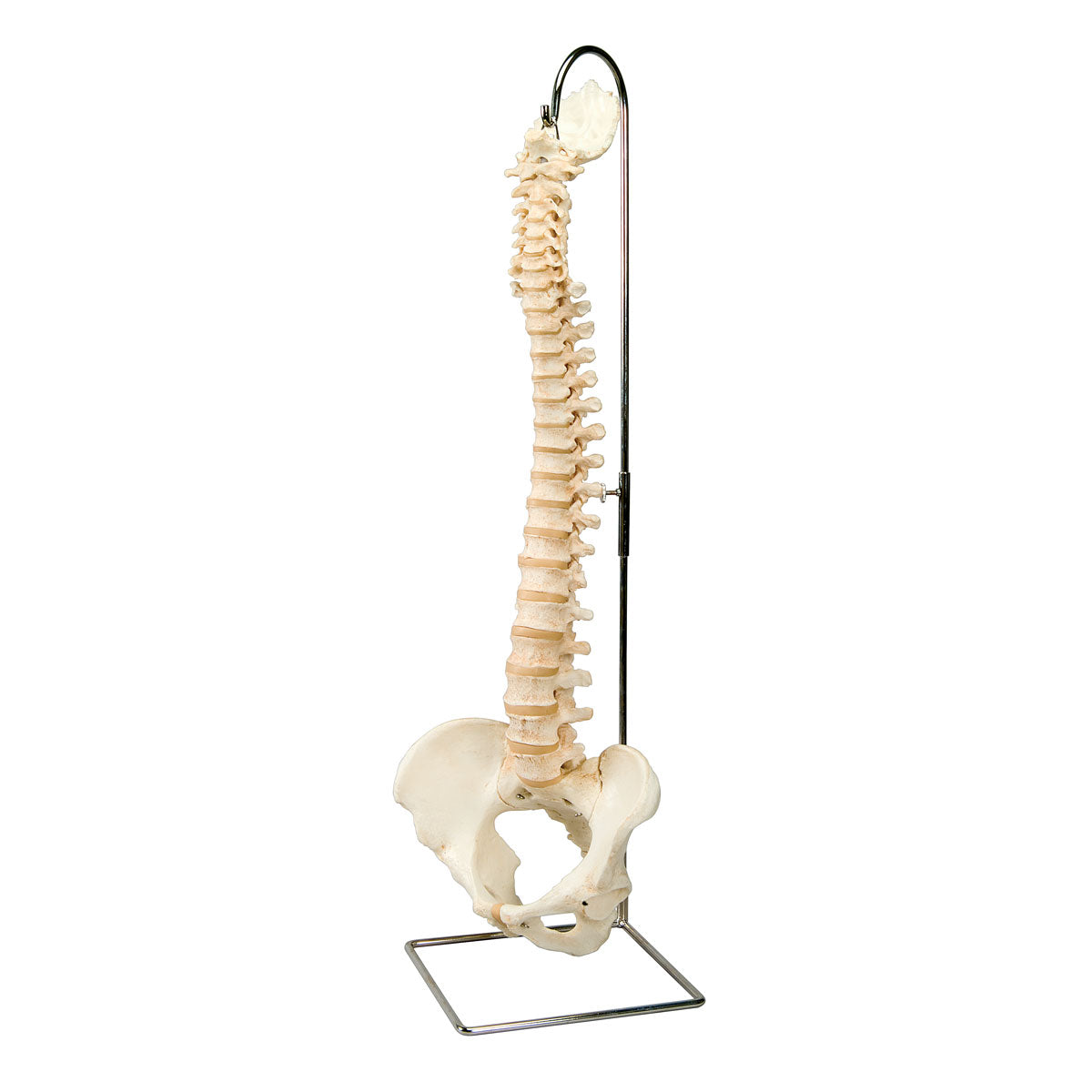SKU:EA1-1000157
Realistic and lifelike model of the spine without stand and nerves
Realistic and lifelike model of the spine without stand and nerves
ATTENTION! This item ships separately. The delivery time may vary.
Couldn't load pickup availability
If you are looking for a flexible model of the spine, where the bone tissue appears as realistic as possible and spinal nerves are not relevant, we would recommend this model.
The model is delivered without a stand, but a stand can be purchased separately.
The model measures 85 cm in height. It is made of a unique material called BONElike, which imitates real bone tissue very well. In connection with the launch, the special imitation has been praised by e.g. professors. The vertebrae are held together by a copper wire. The model is delivered without a stand.
Anatomically speaking
Anatomically speaking
Anatomically speaking, the model shows the entire vertebral column, which consists of a neck part, a chest part, a lumbar part, a pelvic part and the coccyx. The neck bone is also included. Therefore, the model shows the two most important joint types in the spinal column, which are the symphyses (disci/band discs) between the vertebral bodies and the facet joints, which are sliding joints between the vertebrae's pivots. The lower neck joint and the sacrococcygeal joint are also seen. Since the neck bone is included on this model, the upper neck joint is also visible.
In addition, the model shows the pelvis in its entirety as a ring structure. Therefore, the model also shows the SI joint between the sacrum and the pubic bone as well as the symphysis between the pubic bones.
The bone structure is extremely realistic. Compared to similar models, even the smallest "bony landmarks" such as knots and depressions and much more can be seen (see also the close-ups on the left).
Flexibility
Flexibility
In terms of movement, the model is flexible, even though it is primarily produced for display. The mobility of the human spine is greatest in the cervical and lumbar regions (which are lordotic), while the thoracic region (which is kyphotic) is less mobile. This model can be used to demonstrate the most important movements of the spine, which are flexion-extension, lateral flexion and rotation in the neck and lumbar region.
The upper and lower neck joints, which connect the neck bone (os occipitale), upper cervical vertebra (atlas) and second upper cervical vertebra (axis), are not movable and therefore movements in these joints cannot be demonstrated. It should be added that the occiput and atlas can be removed.
Although this model does not include spinal nerves, the sacrum can be opened and studied. It is thus possible to see the canalis sacralis as well as the Y-shaped canals in its lateral wall (see image on the left).
Clinically speaking
Clinically speaking
Clinically, this model is ideal for understanding disc herniation, root involvement and spondylolisthesis. It can also be used to understand disorders such as back pain, scoliosis, spondylosis, spinal stenosis and osteoarthritis.
The model can of course also be used to understand fractures (breaks) and various disorders related to the pelvis.
Share a link to this product

A safe transaction
For 19 years I have been managing eAnatomi and sold anatomical models and posters to 'almost everyone' who has anything to do with anatomi in Scandinavia and abroad. When you place your order with eAnatomi, you place your order with me and I personally guarantee a safe transaction.
Christian Birksø
Owner and founder of eAnatomi and Anatomic Aesthetics






